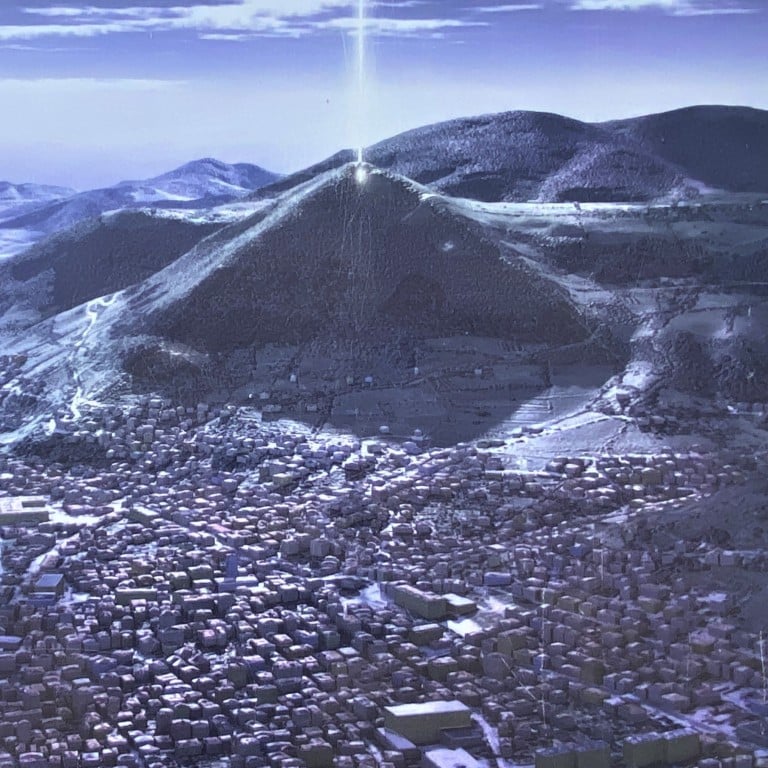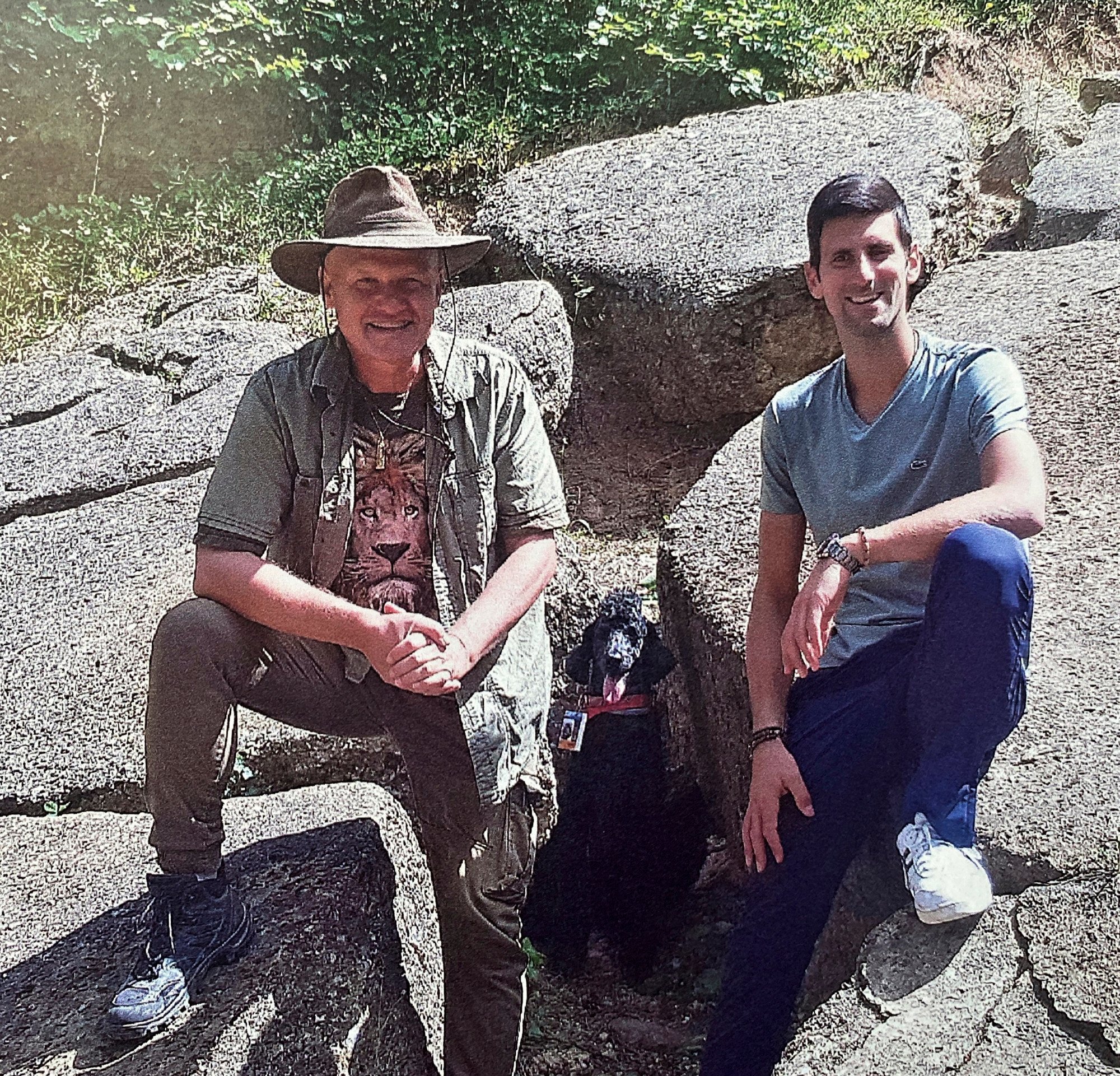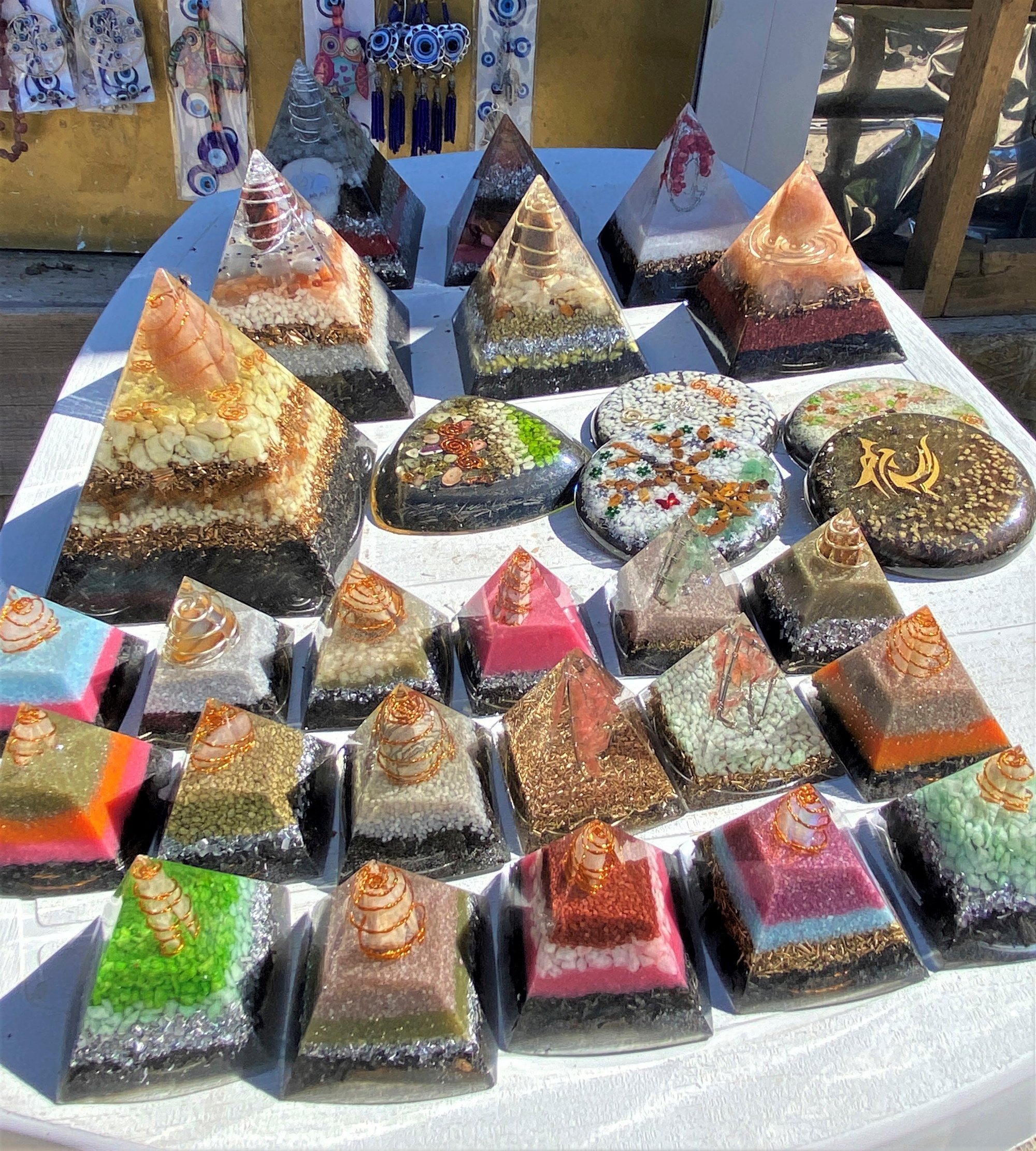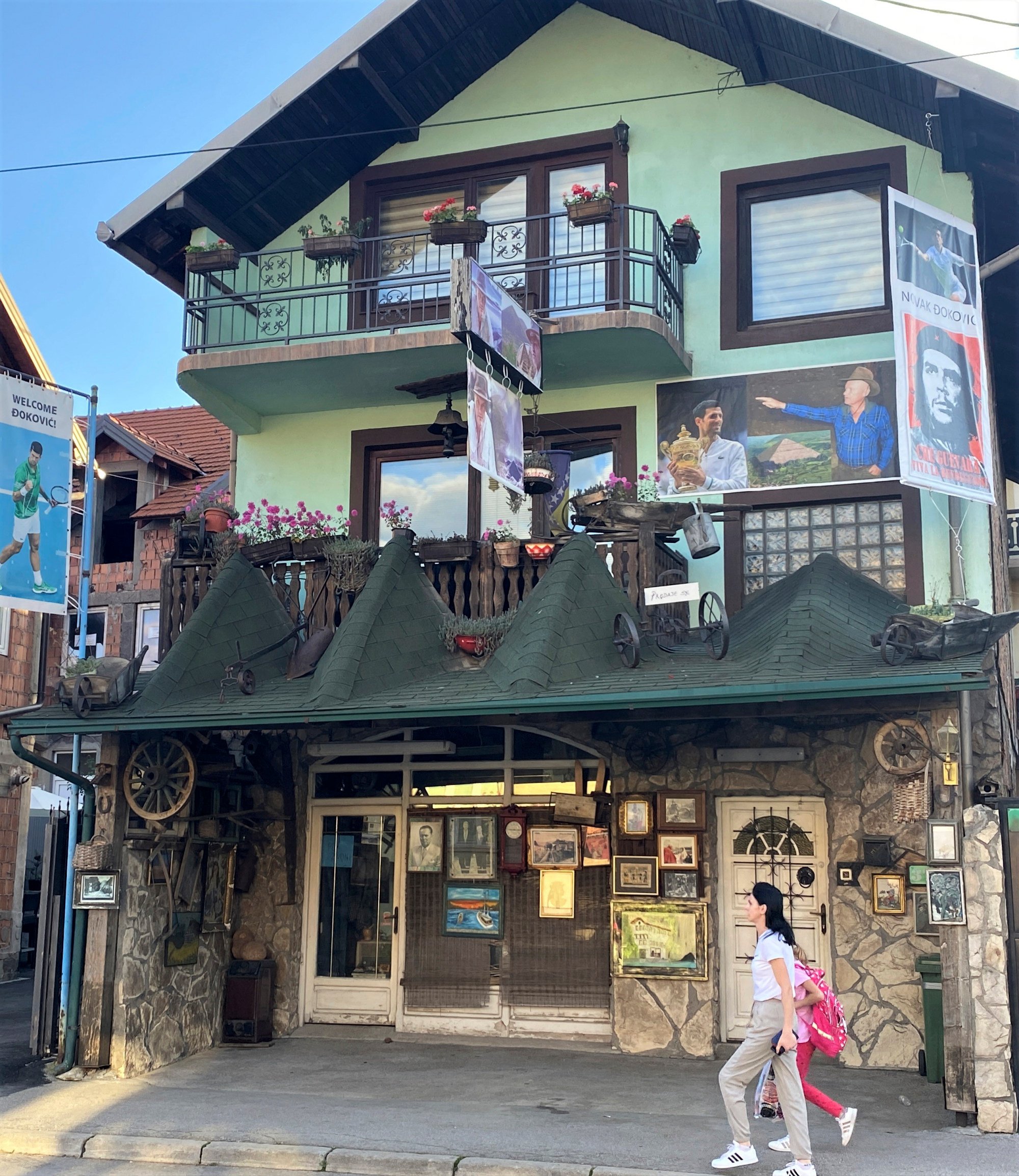
Is Novak Djokovic-endorsed Bosnian Valley of the Pyramids the 8th world wonder – or just a massive hoax?
- The Bosnian Valley of the Pyramids was supposedly built by an advanced prehistoric civilisation and has a mystical energy that can heal the ills of mere mortals
- Novak Djokovic’s endorsement has supercharged visitor numbers, making it a hub for vaccine sceptics in a country with one of Europe’s lowest vaccination rates
The burly construction worker’s eyes shine with evangelical zeal as he gestures towards the triangular hill looming over the small rural town of Visoko in Bosnia and tells us: “In 10 years’ time, more people will visit here than the Great Pyramid of Egypt.”
A migrant labourer in Australia, he has flown home to take his elderly father from North Macedonia to a place called the Bosnian Valley of the Pyramids in the hope of curing him of his chronic lung disease.
“You can feel the positive energy around you, and my father’s already breathing more easily,” he insists, before launching into an unrelated rant about how Vladimir Putin is the hero of the world and Nato plotted the fall of Yugoslavia.
Like thousands of other daily visitors from the Balkans and around the world, this slightly scary man believes Visoko is a source of miracles, home to an early civilisation that communed with aliens and a cosmic hub where disease and sickness can be banished.

The transformation of Visoko – population 10,000 – from a drab and unremarkable riverside town into a modern-day Lourdes, and Bosnia’s leading tourist attraction, over the past two decades is as extraordinary as it is controversial.
It began in 2005, when Sam Osmanagich, a swashbuckling United States-based Bosnian Serb who dresses in the style of Indiana Jones, declared that the vaguely Toblerone-shaped hills surrounding Visoko were, in fact, the oldest and largest man-made pyramids on Earth.
1,200km trek isn’t quite so daunting – when you have a Japanese robot suit
They date back 30,000 years, he claims, making them some 25,500 older than the Egyptian pyramids, and the people who lived here were a highly advanced civilisation rather than the primitive hunter-gatherers previously thought to have occupied the region.
Osmanagich – who has no archaeological qualifications but does hold a PhD in social sciences – renamed the 270-metre-high (886-foot) Visocica hill overlooking the town the Bosnian Pyramid of the Sun, claiming to have found a form of prehistoric concrete beneath the undergrowth on its slopes.
Two smaller triangular hills nearby – renamed the pyramids of the Moon and the Dragon – are also man-made, he claims, and have been buried under a metre or more of trees and vegetation since they were constructed by an advanced prehistoric civilisation.

Not only are they the oldest pyramids in the world but, according to Osmanagich, the three hills emit energy beams and act as a beacon for intergalactic civilisations with the capacity to transfer information instantly from one end of the galaxy to the other.
In a country worn down by years of ethnic conflict and more accustomed to war and misery than visits from benign aliens, the idea of being home to the most exciting archaeological discovery since Tutankhamun – and a cosmic portal to boot – held obvious appeal.
Visitors poured in to Visoko, and Osmanagich began excavating underground tunnels 3km (1.9 miles) from the Pyramid of the Sun, which he believes lead to its interior and contain crystal-clear waters and an atmosphere with mystic healing powers.

If it all sounds a bit bonkers, most serious scientists agree. While endorsed by a handful of mostly Russian and Serbian academics, Osmanagich’s claims have been ridiculed by the European Association of Archaeologists, which described them in a statement as a “cruel hoax” that has “no place in the world of genuine science”.
US geologists have, meanwhile, concluded the so-called Pyramid of the Sun is a natural geological formation similar to other hills and mountains in the area while the underground tunnels are thought to be nothing more mystic than caves or the remains of medieval mines.
Osmanagich and his band of amateur archeologists have even been accused of doctoring sections of the pyramids and tunnels to make them seem less like hills and caves and more like evidence of a prehistoric super-race that chit-chatted with extraterrestrials.

But still the faithful come. After all, what is the word of internationally respected archaeologists and geologists compared with the endorsement of tennis star and Serbian icon Novak Djokovic?
During a visit in July 2020, Djokovic reportedly described Visoko as “home for my soul”, and said, “If there is a paradise on Earth, then it’s here.” He also declared, “I’ve visited many energy places, but this is the strongest.”
And in July of this year – three days after winning Wimbledon – Djokovic was back in Visoko, with his friend Osmanagich, to play an exhibition tournament and open a training centre for local tennis players in an expanding visitor complex near the underground tunnels.

Djokovic’s stamp of approval has supercharged visitor numbers, with more than 2,000 people a day now flocking to Visoko, elevating it from a New Age oddity to a hub for vaccine sceptics in a country that has one of Europe’s lowest vaccination rates.
It is also a magnet for nationalists, driving the belief in a Serbian master race that helped trigger the war in Yugoslavia in the 1990s. Osmanagich argues his discoveries show that Serbia was the world’s first cultural cradle after the Ice Age.

In a region where recent history is so painful and divisive, the Bosnian Valley of the Pyramids draws many times more daily visitors than the memorial in Srebrenica to the massacre by Bosnian Serbs of more than 8,000 Muslim men and boys in 1995 – a genocide some Serb nationalists now insist never took place.
However, the gloomy clouds of geopolitics and medical orthodoxy seem light years away as Osmanagich poses happily for pictures on a bright September morning with visitors paying €10 (US$9.80) each for guided tours of the tunnels. (Return visitors can pay less to sit alone in the tunnels for an hour and absorb their healing power.)
Young volunteers hand out helmets and lead paying guests along a half-mile section of the tunnel opened to tourists by Osmanagich’s Bosnian Pyramid of the Sun Foundation in a rapidly expanding Ravne 2 complex that now includes Djokovic’s tennis centre.

Coming to this far-flung corner of the Balkans is a leap of faith in itself, so most visitors are already heavily invested in the myth as they listen unquestioningly to the guides recite their mantras about energy fields, weird inscriptions and magical waters that respond to people’s emotions.
There’s no great hurry to burrow into the Pyramid of the Sun itself, it seems: our guide tells us that it could take 10 to 15 years for the team of volunteers to dig that far. So if it does turn out to be just a hill, at least there will be a decade or so of tourist revenue to soften the blow.
Not every volunteer sticks to the script. A teacher from Italy who spent two weeks helping with excavations at the site, posted online afterwards: “There’s no pyramid, just bulls*** … It’s a hill. The whole story is a massive hoax.”

Osmanagich is untroubled by such cynicism, signing autographs and parading around his kingdom with the air of a celebrated Victorian explorer while his face gazes out serenely from a hoarding carrying his words: “Almost everything they teach us about ancient history is wrong.”
Local government officials agree, enthusiastically endorsing his pyramid narrative. Meanwhile, a lively cottage industry in pyramid-related trinkets and paraphernalia has sprung up around Visoko, along with dozens of guest houses with names such as Pharoah’s Guest House and Pyramid Energy House.

As the crowds ebb away and evening shade falls on the Pyramid of the Sun, a young professional couple from Croatia tramp down the slopes deep in conversation after a thoughtful inspection.
They seem sensible enough, so I ask them if they believe they have just seen the eighth wonder of the world or whether the whole thing is nothing more than an inverted pyramid of piffle.
“Hill or pyramid?” I ask. “Hill,” the man replies with a laugh. His partner is less sure. “I think it’s a pyramid,” she says. “At least, I want it to be a pyramid. Scientists don’t know everything. I want to believe there are some things in life beyond our understanding.”

